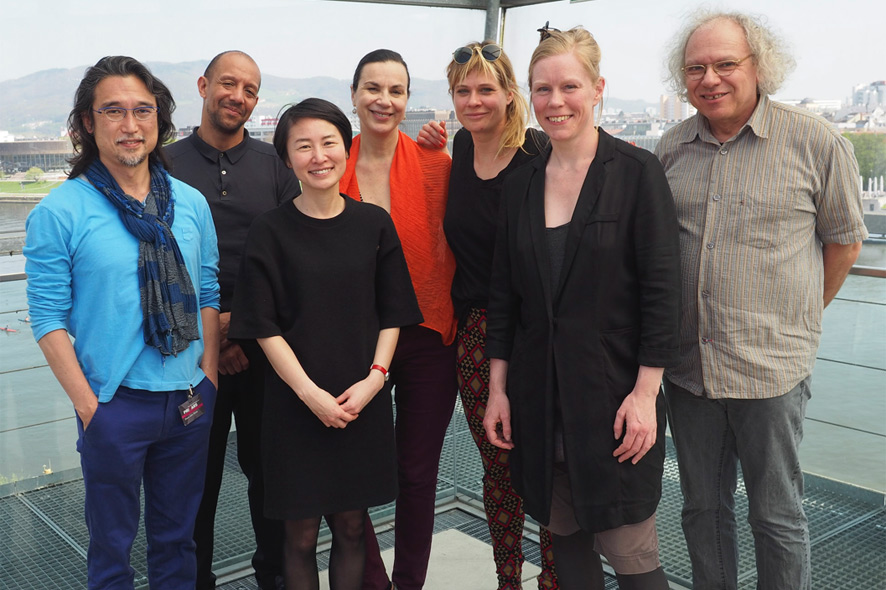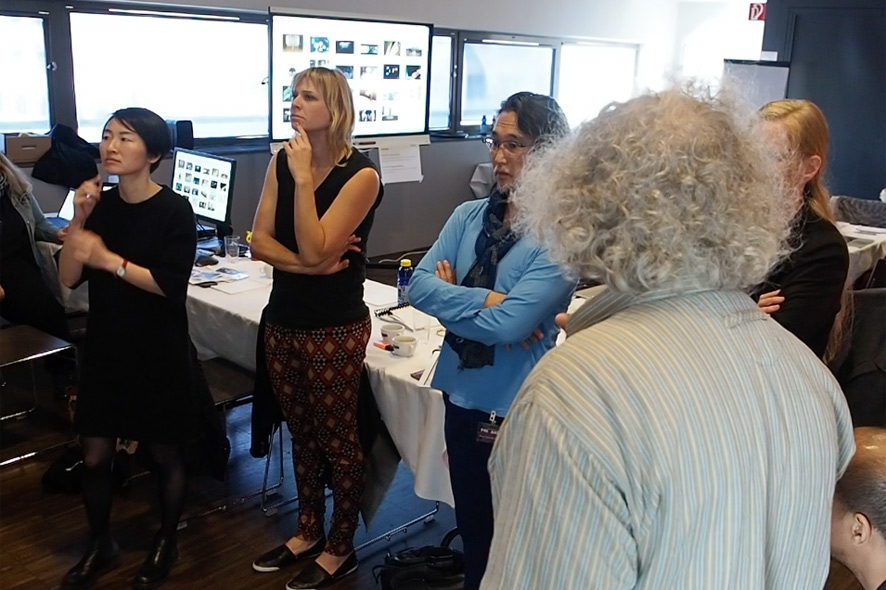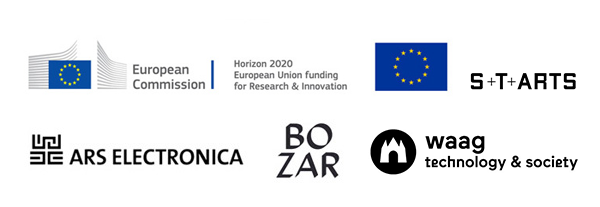Artificial intelligence, genetics, climate change—these are just a few of the topics that Sophie Lampartner and her fellow STARTS Prize jurors confronted this year. In this interview, she not only elaborates on hot issues that emerged from 2,977 entries submitted for prize consideration from 97 countries; she also delineates the framework conditions that Europe needs to have in place in order to foster cooperation among science, technology and art.
What influence can science and technology have on artistic activities?
Sophie Lamparter: Science and technology exert an influence on our entire society, how we see and understand the world, and how we prepare ourselves for the future. Of course, these are major drivers of inspiration, as well as materials for new themes, new possibilities and, to some extent, causes for concern and critical questioning on the part of artists.
Art imparts impetus to science, but art also receives impetus from science. Could you cite a couple of examples?
Sophie Lamparter: Consider, for example, a technology like virtual reality. This is actually not a new technology, but the computing power available today is what now makes it possible to implement projects with less expenditure of effort and to make this new medium accessible to a lot of people. Research and development have made possible the quality that can be achieved today and will continue to drive advances in this field. On the other hand, the technology alone doesn’t do the whole job. Sure, you’ve got the virtual reality glasses and the 360° camera, but you still need content; you need stories and experiences.
The content that goes into these works comes from creative people, the artists, designers, filmmakers, illustrators and writers of this world. In order to make this virtual experience really convincing, they repeatedly endeavor to break new ground—for instance, to bring the human body into play, to move about in space, to bring several people together, or to integrate additional senses by means of sound, touch or fragrances. This, in turn, shows developers and researchers the limits of their technology and points out the direction in which they can develop it further. And this becomes a reciprocally influencing cycle.

The jury of the 2017 STARTS Prize. Credit: Martin Hieslmair
The STARTS Prize competition is staged under the auspices of the European Commission. What changes would you like to see happening in Europe in creative fields?
Sophie Lamparter: Global digitization, technical progress makes our world faster and more complex. The only way we can keep up and master these challenges is by working together. Engineers, developers, researchers, artists, designers and social scientists have to take leave of their discrete domains and comingle their multifarious perspectives. That gives rise to new ideas that then bring about innovation.
I would welcome measures that foster interdisciplinary cooperation on an ongoing basis: interdepartmental university programs, incubators and co-working spaces oriented especially on creative industries, and investment funds to really scale such projects. To make this happen, the public and private sectors have to work together. Both will profit from this. Influencing the economy and society affects each and every one of us.

The STARTS Prize Jury at work. Credit: Martin Hieslmair
At swissnex in San Francisco, we’ve been working for over a decade on interdisciplinary exchange and networking, and we’ve made significant progress over the last year. We have more than 60 jobs in which startups, researchers, employees of large corporations, designers and artists work alongside and with one another and inspire each other. We have recognized that it takes new models to nurture creativity and exchange. We set up DART 17 (Design, Art, Research, Technology), a testing lab for interactive projects where we conduct targeted searches to find creative individuals to explore the potential of and new interactions with new technologies.
With their fingers on the pulse of international markets and thanks to custom-tailored programs, young talents can enhance and upgrade their prototypes, get direct feedback, and expand their network of high-tech firms, creative associates and investors.
In which thematic areas do you see science, technology and art overlapping at present?
Sophie Lamparter: I was delighted to be a member of this year’s STARTS jury, to assess hundreds of projects from throughout the world, and to discuss them with my esteemed fellow jurors over the course of four days. This provided us with good insights into what moves people nowadays, and which topics they regard as especially urgent right now.
We saw a lot of projects that deal with artificial intelligence and automation, and that call into question human-machine interaction or collaboration.
Rapid progress in genetics and synthetic biology are also bringing about changes in our society and giving rise to new perspectives on life and human health. Nobody can escape the impact of this.
Growing quantities of data raise questions about visualization, processing and comprehension, but also about loss of control, privacy and surveillance.
Climate change is the elephant in the room. In this context, people are proposing how we can use new technologies to recognize interrelationships and discover shared approaches conducive to a future in which we can live for the long term with our finite natural resources.
What we very much applaud, in any case, are the many grassroots and community projects, organizations formed by people to advance these themes. From do-it-yourself bio-labs to programming and blockchain courses for young people—people are learning, trying out new things and helping themselves.
Every single one of these projects constitutes another significant example of why we need more STARTS projects. Designing our future can’t be left up to individual developers, researchers or artists. The issues are too important. We have to come together, brainstorm together, evaluate proposals together, and then implement the best possible solutions.

Sophie Lamparter is an Associate Director at swissnex San Francisco. By building networks in science, technology, art, and innovation, she has spearheaded interdisciplinary programs at the edges of art/technology and art/science. She believes in the power of dialogue and is passionate about finding new talent with a creative approach to technology. Sophie’s most recent initiative is DART 17, a testing lab for interactive projects. She is a 2017 jury member at the Priz Ars Electronica STARTS (Science +Technology + Arts), a new initiative by the European Commission to award artistic projects that drive innovation for industry and research. – See more at swissnexsanfrancisco.org
This project has received funding from the European Union’s Horizon 2020 research and innovation programme under grant agreement No 732019. This publication (communication) reflects the views only of the author, and the European Commission cannot be held responsible for any use which may be made of the information contained therein.

